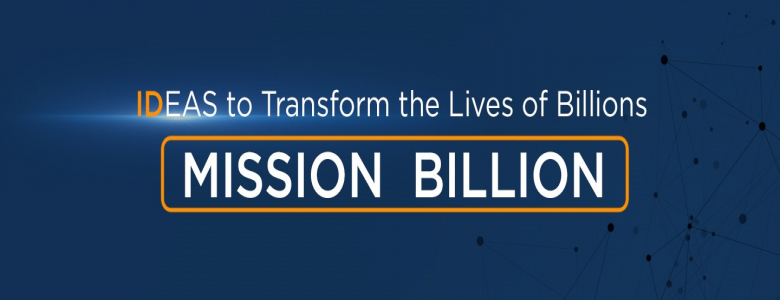What is the focus of the Mission Billion Challenge?
The focus is on “How can digital identification systems in developing countries be better designed or adapted to protect people’s privacy and empower them with greater control over their personal data?”
The Challenge seeks creative ideas and innovative solutions to promote ‘privacy by design’ and provide people with greater control over their personal data through features that can be embedded into digital identification systems, such as:
- Providing greater oversight and control of personal data. Solutions that enable individuals to inspect, update and correct personal data; provide transparency regarding who has accessed their data and for what purpose; and the ability to seek redress for unauthorized use.
- Preventing the misuse of personal data. Solutions that can help protect an individual’s personal data from misuse or unintended disclosure, such as through minimizing, hiding, compartmentalizing personal data, tamper proof logs, or other means.
Such ideas and solutions should be practical, cost effective and be relevant for developing country contexts in which some segments of the population may have low literacy and numeracy levels, as well as limited digital skills.
The creative ideas and innovative solutions can be complete solutions for digital identification systems, or features, or components that enhance existing systems. Examples of the types of submissions the Challenge is seeking include (but are not limited to):
- New ways of thinking
- New technologies or different uses for existing technologies
- Business and/or technical processes
- Enterprise, technical or functional architectures
To maximize the development impact and wide-spread adoption, all submission shall be open solutions, i.e. made available on public licenses that allow re-use without restrictions.
How are we CrowdSolving the Mission Billion Challenge?
1. SOURCING SOLUTIONS: Whether you’ve just started building your solution and your team, you’re running a pilot, or you’re ready to scale, we’re looking for innovators and entrepreneurs with the best solutions to these global challenges.
2. SELECTING SOLUTIONS: The first round of judging takes place once the Mission Billion Challenge closes. After an initial screening, the judging committee will select finalists for the Challenge from all of the solutions submitted on the platform. Those finalists will be invited to a live pitch event where the most promising solutions for the Mission Billion Challenge are selected as winners.
What type of solutions will be accepted to the Mission Billion Challenge?
Innovations large or small. Human-centered solutions. Tech solutions. Solutions that enhance digital identification systems.
ID4D considers solutions at all stages of development:
- Idea: A plan or concept by an individual or organization.
- Prototype: An individual or organization building and testing a product, service, or model.
- Pilot: An individual or organization deploying a tested product, service, or model in at least one location.
- Growth: An individual or organization with an established product, service or model rolled out, which is poised for further growth in multiple locations.
- Scale: An individual or organization working in several locations and that is looking to scale significantly, focusing on increased efficiency.
The most important thing is that your solution will solve the Mission Billion Challenge.
Through open innovation, ID4D is looking for a diverse portfolio of solutions across geography, stage of development, and team members’ gender and background. We believe that there is no one solution the world’s most complex challenges—and encourage people of all backgrounds to submit their applications.
How will my solution be evaluated?
The judging committee for the Mission Billion Challenge will be comprised of staff members from ID4D and MIT Solve, as well as other experts and leaders from across industries.
In the first round, the judging committee will perform an initial screening of all applications for completeness, for coherency, and for whether the solution appropriately addresses the challenge. Then our judges will score the screened applications to determine finalists. Here are the criteria the judges will use to score the applications on the website:
- Alignment: The solution addresses the challenge that has been set forth.
- Context Appropriateness: The solution takes into account the context of developing countries, including low to no connectivity in some areas and little formal technical training among individuals, as well as low literacy and numeracy levels.
- Scalability and Ease of Use: The solution can easily be scaled to affect the lives of millions of people.
- Feasibility: It is feasible to implement the solution, and the team has a plan for the solution to sustain itself after implementation.
- Innovative Approach: This is a new technology, a new application of a technology, or a new process for solving the challenge.
In the second round, selected finalists will pitch before the challenge judges and a live audience during a pitch event in April. The judges will determine which solutions are the most promising. Those selected will receive prizes and support from ID4D.
What is the Mission Billion Challenge timeline?
- November 30, 2018 - Mission Billion Challenge Opens
- February 24, 2019 - Deadline to Submit a Solution
- March 14, 2019 - Finalists Announced
- April 12-14, 2019 - Pitch Event during Spring Meetings of the World Bank Group and the International Monetary Fund in Washington, D.C.
Where can I review the official rules of the Challenge?
The official rules are available on Mission Billion Submission page on the MIT Solve Platform.


